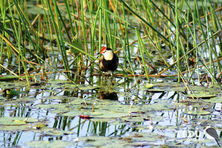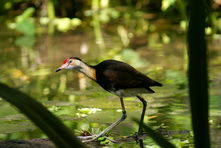
Shoppers Feedback:
Jan 17, 2017
Hello Ros,
I have now paid the invoice, but I would like to write to you just to say a big THANK YOU for getting me the Penguin!
The ChatterMate Penguin became a nice memory for me when I was in New Zealand, and I am so greatful to you for arranging so that I could have it! :-)
Thank you so much!!!!!!!!!!!
Regards,
Malin
Hi Ros,
Many thanks for your very kind email. I really appreciate your prompt reply!
I appreciate your advice regarding the decorations and customs. These are a gift for my daughter’s exchange student family so when she returns home on the weekend I will show her and see if she loves them as much as I do!
Thanks so very much again - I am truly grateful for your kind assistance.
Kind Regards
Bernadette
Ros,
Thanks again for the great customer service. It's a refreshing change!
Best regards,
Trevor
Hey Roz,
Thank you for your emails. Just loved my first order. The cute little Aussie bush critters are going to be used for an office Christmas decoration. My colleagues also liked them and talked about making an order to your site. I'll send you a photo when completed.
I'll be ordering more to send to my daughter's host family in America.
Fabulous service from you.
Kind regards,
Michelle
Thankyou. Order arrived today. One very happy grandson with his new beastly binoculars.
Regards,
Irene
- Home
- Wild Wonders
- Shop
- Aromas of Australia
- Australian Made
- Books
- Book Marks
- Christmas Decoration Sale
- Christmas Decorations
- Clocks
- Drink Holders
- Garden & Outdoor
- Gift Wrapping & Cards
- Home & Giftware
- Jewellery
- Keyrings
- New Products
- Pencils & Pen Holders
- Photo Frames
- Plush Toys
- Plush with Sound
- Sheepskin Rugs
- Stationery
- Stone Carvings
- Toys & Games
- Travel Goods
- Wedding
- Wild Figurines
- Wildlife Safety Products
- Wind Chimes
- Wine Charms
- View All Products
- Wildlife
- Australiana
- Explore
- Contact Us

Quick Facts
| Length: | - |
| Height: | 21 cm |
| Weight: | - |
| Colour: | Belly, face and throat are white. Black crown, back and breast, brown wings. Red forehead comb |
| Habitat: | Tropical and Sub tropical freshwater wetlands - lagoons, billabongs, swamps, lakes, rivers. Providin |
| Food: | Aquatic insects and plants |
| Predators: | - |
| Status: | Secure in NT & QLD, Vulnerable in NSW, Not present in all other states and territories in Australia |
The Comb-crested Jacana, also known as the Lotusbird, has a red fleshy forehead comb, a black crown, back and breast and brown wings. The belly, face and throat are white, and there is a faint yellow tinge around the eye and throat. Both sexes are similar in appearance, but the female is larger than the male, and slightly brighter in colour. In flight, the long legs and toes trail behind the body. Young Jacanas resemble the adult birds, but are rufous to black on the head and nape, and have a rufous-black breast band. The red fleshy comb is much smaller and darker.
Comb-crested Jacanas occupy coastal and sub-coastal regions from the Kimberleys, Western Australia, through northern Australia to about Grafton, New South Wales. They are more common in the north of their range.
Comb-crested Jacanas are found in tropical and subtropical freshwater wetlands, including lagoons, billabongs, swamps, lakes, rivers, sewage ponds and dams, providing there is adequate floating vegetation.
Comb-crested Jacanas will move to new locations, particularly in response to changes in their current habitat, such as droughts or excessive flooding.
The Comb-crested Jacana feeds on aquatic insects, which it seizes from floating vegetation or the surface of the water. It also feeds on seeds and aquatic plants. Birds rarely come to shore. When searching for food, the Comb-crested Jacana bobs its head and flicks its tail continuously.
The female Comb-crested Jacana may mate with several males, while the male alone builds the nest, incubates the eggs and cares for the young. If danger threatens the young birds, the male has the curious habit of picking the chicks up under his wings and carrying them off to safety.
At a distance, the Comb-crested Jacana looks like it can walk on water. In fact, it is walking on floating plants. Its extremely long toes help it to spread its body weight over a larger area.
Last Updated: Wednesday 17th July, 2013
BUSH e-TELEGRAPH
Signup for our monthly newsletter the "e-Telegraph"
Quick Links
Home | The Beginning | About The Land Down Under | Wild Wonders | Advertise on Wild Wonders | Christmas Decoration Sale | Christmas Tree Decorations | Drink Holders | Plush with Sound | Stone Carvings | Wildlife Wine Charms | Freebies | Australian Wildlife | Help Our Wildlife | Australiana | Photo of the Month | Explore The Land Down Under | Contact Us | Legal Notices


